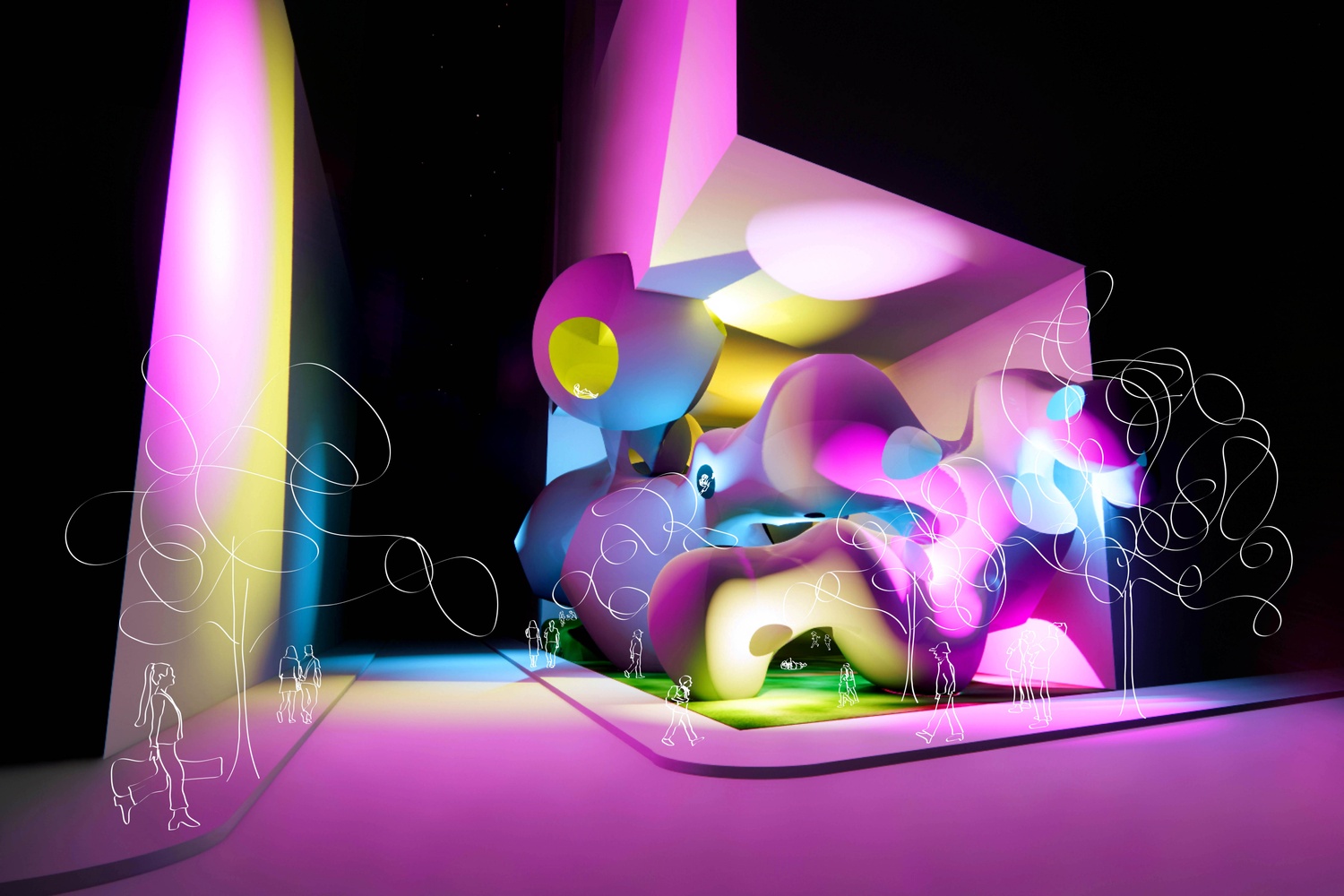Manhattan’s grid is iconic. Its order and precision grants ease to its users who rush about daily and commute via train, foot, bike, or car. Few are aware that this grid was implemented by a planning team in 1811 to facilitate the sale of land. These days, many privately owned plots of land are vacant because the rent is way too high, especially around times square. These vacancies must be transformed into public stops granting people a space for escape, relaxation, and engagement. The Stop is a system of public pods that occupy vacant storefronts and plots of land, providing a network of escapes filled with foliage, relief, and community. These activated places turn unused space into desirable public hubs which engage both indoor and outdoor spaces and inspire a diverse range of activities and ambiance, all to be determined by users and their interactive desires.
The organic form of these Stops works to combat the linearity of our built environment and Manhattan’s grid, inviting people to engage with one another in a more corporeal and natural kind of space. These pods allow visitors to wander aimlessly and escape the speed of our non-stop city. The Stop provides a space for a long breath, quick lunch, a spontaneous dance class, or even a movie screening. Although these engagements may seem like luxuries, they are, in fact, essential to maintain a happy and motivated lifestyle and must be accessible to all. New Yorkers know that space to exist and escape is essential and precious and will eagerly engage once welcomed in.
Ultimately, the Stop raptures the linearity of Manhattan’s grid and our capitalist society by publicizing privately owned space and providing a sense of community, escape, liberation, agency, and wonder.






